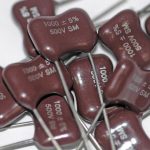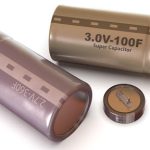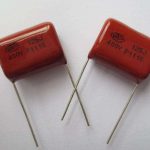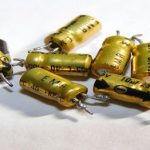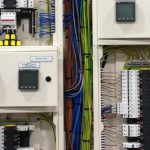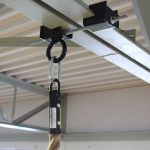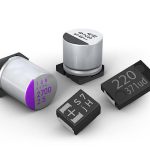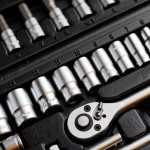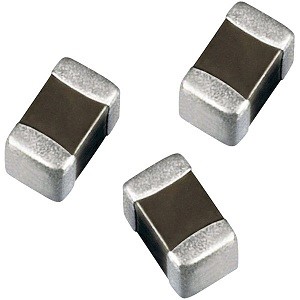
Taking over hybrid circuits
Multilayer Ceramic Chip Capacitors (MLCCs) compose up to 30% of the total components found in a typical hybrid circuit. MLLC’s are made up of the monolithic ceramic block that has comb-like sintered electrodes. The electrodes come to the surface at the face ends of the monolithic ceramic block where they make an electrical contact using metallic layers.
Structure and manufacture of Multilayer Ceramic Capacitors
-
Structure
The basic structure of capacitors features a pair of electrodes separated by a dielectric. In multilayer ceramic capacitors the same structure is repeated level after level hence increasing the amount of charge stored.
-
Manufacture
When making the dielectric materials, they are mixed with various solvents among other substances and pulverized so as to form a slurry-type paste. The paste is then drawn into thin sheets and then made into rolls. They are then coated with metal paste which will act as internal electrodes. Nickel is popularly used for coating.
After the coating process is complete, the sheets are then stacked in layers. Pressure is then applied to these layers so as to crimp and form them. This process is conducted in a very clean room to ensure the dielectric remains clean and free from foreign matter. The pressed blocks are then cut to the desired sizes.
The pieces of dielectric that have been cut to size are then fired at a temperature range of 1000 to 3000°C. Two ends of the fired chips are then coated using a metal paste, this coat will act as the external electrodes. The external electrodes are backed then a layer of nickel and another one of tin is plated onto the surfaces. After this, the chips are now complete. All that is remaining is just verification to ensure that they meet the desired electrical characteristics and packaging them.
Types of MCCs
Multilayer Ceramic Capacitors are characterized by dielectric, capacitance, rated voltage, packaging type, tolerance, and capacitance. The most common values are 10nf, 100 nf, and 1µF. Rated voltages lie between 4V and 10 Kv. Most of them are rated at 16, 25, 50, or 100V.
Applications for MCC
MCC can be used in a variety of applications including;
- Consumer electronics
- PCs
- Hard disks
- Mobile phones
- Telecommunications
- Video cameras
- Data processing
Recently MCCs have become increasingly smaller and their capacitance has increased tremendously with the dielectric layers have become thinner. The layers are also being now being stacked more precisely than before.
Attractive features of MCCs
- Low ESR
- Good capacitance-to-volume ratio
- Low leakage
- Non-polarity
- Low cost






